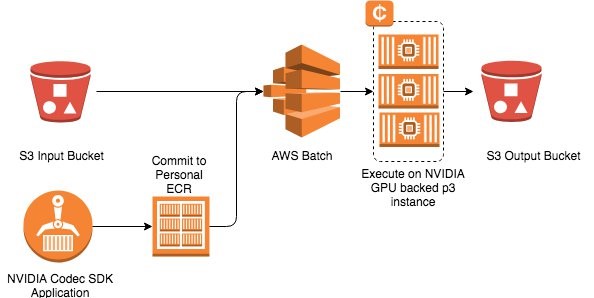AWS Compute Blog
Tag: GPU
Optimizing GPU utilization for AI/ML workloads on Amazon EC2
This blog post is written by Ben Minahan, DevOps Consultant, and Amir Sotoodeh, Machine Learning Engineer. Machine learning workloads can be costly, and artificial intelligence/machine learning (AI/ML) teams can have a difficult time tracking and maintaining efficient resource utilization. ML workloads often utilize GPUs extensively, so typical application performance metrics such as CPU, memory, and […]
Creating an AWS Batch environment for mixed CPU and GPU genomics workflows
This post is courtesy of Lee Pang – AWS Technical Business Development I recently worked with a customer who needed to process a bunch of raw sequence files (FastQs) into Hi-C format (*.hic), which is used for the structural analysis of DNA/chromatin loops and sequence accessibility. The tooling they were interested in using was the Juicer […]
GPU workloads on AWS Batch
Contributed by Manuel Manzano Hoss, Cloud Support Engineer I remember playing around with graphics processing units (GPUs) workload examples in 2017 when the Deep Learning on AWS Batch post was published by my colleague Kiuk Chung. He provided an example of how to train a convolutional neural network (CNN), the LeNet architecture, to recognize handwritten digits […]
Scheduling GPUs for deep learning tasks on Amazon ECS
This post is contributed by Brent Langston – Sr. Developer Advocate, Amazon Container Services Last week, AWS announced enhanced Amazon Elastic Container Service (Amazon ECS) support for GPU-enabled EC2 instances. This means that now GPUs are first class resources that can be requested in your task definition, and scheduled on your cluster by ECS. Previously, […]
Running GPU-Accelerated Kubernetes Workloads on P3 and P2 EC2 Instances with Amazon EKS
This post contributed by Scott Malkie, AWS Solutions Architect Amazon EC2 P3 and P2 instances, featuring NVIDIA GPUs, power some of the most computationally advanced workloads today, including machine learning (ML), high performance computing (HPC), financial analytics, and video transcoding. Now Amazon Elastic Container Service for Kubernetes (Amazon EKS) supports P3 and P2 instances, making […]
Deploy an 8K HEVC pipeline using Amazon EC2 P3 instances with AWS Batch
Update – April 14, 2020: AWS Elemental MediaConvert now supports 8K UHD video encoding. 8K encoding is available in the MediaConvert on-demand, professional tier, for resolutions up to 8192 x 4320 using HEVC encoding at 10-bit including HDR. To learn more, please visit https://aws.amazon.com/about-aws/whats-new/2019/11/8k-resolution-encoding-now-available-with-aws-elemental-media-convert/. Contributed by Amr Ragab, HPC Application Consultant, AWS Professional Services AWS provides several […]
Building a GPU workstation for visual effects with AWS
Contributed by Mike Owen, Solutions Architect, AWS Thinkbox The elasticity, scalability, and cost effectiveness of the cloud value proposition is attractive to media customers. One of the key design patterns in media and entertainment (M&E) workloads is using the cloud as a content lake and bringing the underlying processes closer without having to synchronize data. […]
Deploying a 4x4K, GPU-backed Linux desktop instance on AWS
Contributed by Amr Ragab, HPC Application Consultant, AWS Professional Services AWS currently supports many managed desktop delivery mechanisms. Amazon WorkSpaces and Amazon AppStream 2.0 both deliver managed Windows-based machine images with GPU-backed instances. However, many desktop services and applications are better served through a Linux backed instance. Given the variety of Linux distributions as well […]







